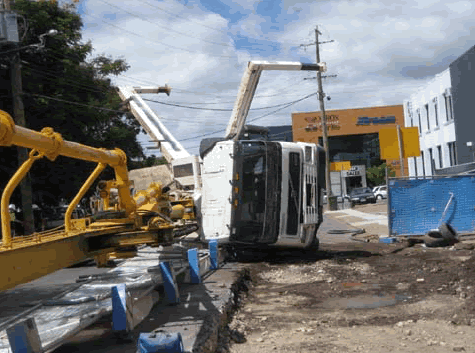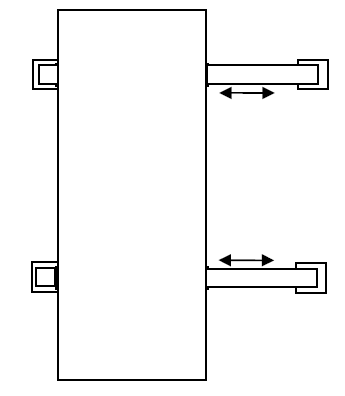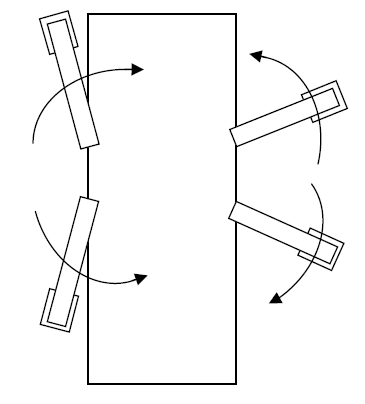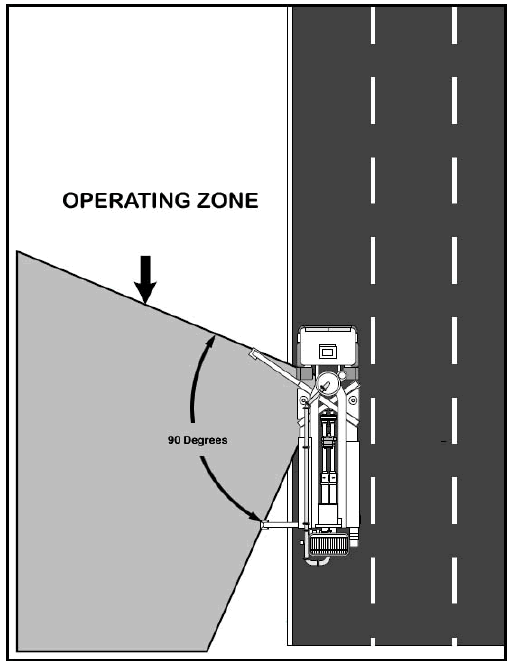Risks of short legging when using mobile plant
First Issued: 14 August 2009
Last updated and reissued: 7 September 2016
Purpose
The purpose of this safety alert is to highlight the risks associated with the practice of short legging:
- mobile concrete placement booms
- mobile cranes
- truck mounted elevating work platforms.
This alert also provides some control measures to manage the risks of short legging.
Background
Short legging refers to the use of mobile plant while the outrigger legs are only partially extended.
Previous overturning incidents due to short legging have occurred around Australia. These incidents include mobile concrete placement booms, mobile cranes and truck mounted elevating work platforms.
Some incidents include:
- In June 2016, a mobile crane overturned at South Brisbane while it was being packed up. The crane moved (slewed) to a point where the counterweight was over the side of the vehicle when it overturned and struck a nearby building. The outriggers of the crane may not have been fully extended to adequately support the counterweight of the crane.
- In 2009, a 36 metre mobile concrete placement boom overturned (refer to Photograph 1). The boom overturned in close proximity to overhead power lines and office blocks. One of the major causes of the incident was that the outriggers had been short legged on one side of the vehicle. When the boom slewed towards the side of the vehicle with the short legged outriggers, the vehicle overturned.

Photograph 1: Overturned mobile concrete placement boom
Contributing factors
Mobile plant may overturn when the boom or counterweight are positioned towards the short legged outrigger or stabilisers.
Outriggers normally telescope outwards from the vehicle (Diagram 1), but on some mobile plant they may swing outwards (Diagram 2). Diagram 1 and 2 show a plan view of how outriggers may extend. Although the way the outriggers are extended may vary, the potential hazard of not extending the outriggers correctly will be the same - the unit can fall over.

Diagram 1: Telescope outriggers

Diagram 2: Swing out outriggers
Short legging is a practice that is often carried out due to one or more of the following factors:
- Restrictive set up areas for the mobile plant (i.e. presence of underground services and obstructions such as barriers, roads, and structures). A risk assessment and pre-planning of the job will significantly reduce the risk of mobile plant overturning.
- Unsuitable ground conditions for safe support of the outrigger feet (i.e. the ground is sloping, uneven or too soft).
- The mobile plant operator has a poor understanding of the safe work practices.
It should be noted that points (1) and (2) may be outside of the operator's control and the operator may be pressured into setting the mobile plant up in a less than ideal way. The hirer and/or principal contractor have a duty to ensure the mobile plant can be safely set up.
Action required
Short legging is a practice that should be avoided wherever possible, due to the increased risk of overturning the mobile plant.
At the design and construction stages of the building, designers and specialist contractors should consider that adequate space is available so that mobile plant required as part of the building process, can be safely set up and packed up.
People in control of workplaces and principal contractors should ensure that adequate room is available to enable mobile plant to be set up and packed up safely. This includes, both operation of the mobile plant and ancillary activities, such as cleaning out concrete lines, rigging a crane or dismantling a fly jib. It may also include obtaining road or footpath closures from the relevant authority. The company supplying the mobile plant should provide the hirer with the actual area required to set up with the outriggers fully extended, expressed as a length by width dimension in metres. The hirer should also request this information from the plant supplier.
Sometimes it may be impractical to set up or pack up the mobile plant with outriggers fully extended. This can be due to inadequate planning prior to the arrival of the plant on site, or extraordinary circumstances.
If short legging is implemented ensure:
- The manufacturer's operating manual for the mobile plant states that short legging is permitted. The manufacturer's operating instructions for short legging must state when this practice takes place, including any necessary reduction of the rated capacity of the mobile plant. In the case of mobile cranes, information related to short legging should be included on the load chart (i.e. rated capacity chart) for the crane. A copy of the manual is kept with the mobile plant.
- The outriggers are marked with an indicator that shows the extent of the short legging (i.e. marks on the outriggers) or the operator's manual shows how far the outriggers are to be extended (i.e. by diagrams).
- A work method statement has been prepared that shows the operating conditions under which short legging can be used. For concrete placement booms and truck mounted elevating work platforms, the work method statement is to include a diagram showing the permissible operating zone of the boom. For mobile cranes the load chart is to show lifting capacities of the crane with outriggers partially extended. This load chart is to be complied with for all positions of the boom. The work method statement should be provided to the principal contractor's representative (or the person in control, if no principal contractor is required for the job) and the principal contractor is to assess the work method statement to ensure the items above are addressed.
- The stability of any crane, concrete placement boom or truck mounted elevating work platform must be maintained during:
- set up
- operation
- pack up.
Outriggers or stabilisers should be positioned as specified in the manufacturer's procedures for the unit. The procedures should clearly outline the sequence to be followed for setting up and packing up, attaching and removing of counterweights and fly jibs and include the outrigger or stabiliser position to ensure stability of the unit.
Note: If mobile plant is fitted with a slew limiting device that prevents the boom or counterweight from slewing into the zone where there is risk of the plant overturning the operator should be trained in the use and limitations of the slew limiting device.
A typical diagram for short legging of a concrete placement boom is shown below (Diagram 3).

Diagram 3: An example of a diagram for short legging a mobile concrete placement boom. The diagram shows the permitted operating zone. Note: partial road closure obtained and traffic control procedures implemented.
Further information
Further information on the safe support of mobile cranes and mobile concrete placement booms is provided in the Mobile crane Code of Practice 2024 (PDF, 2.29 MB) and the Concrete pumping Code of Practice 2019 (PDF, 1.04 MB).